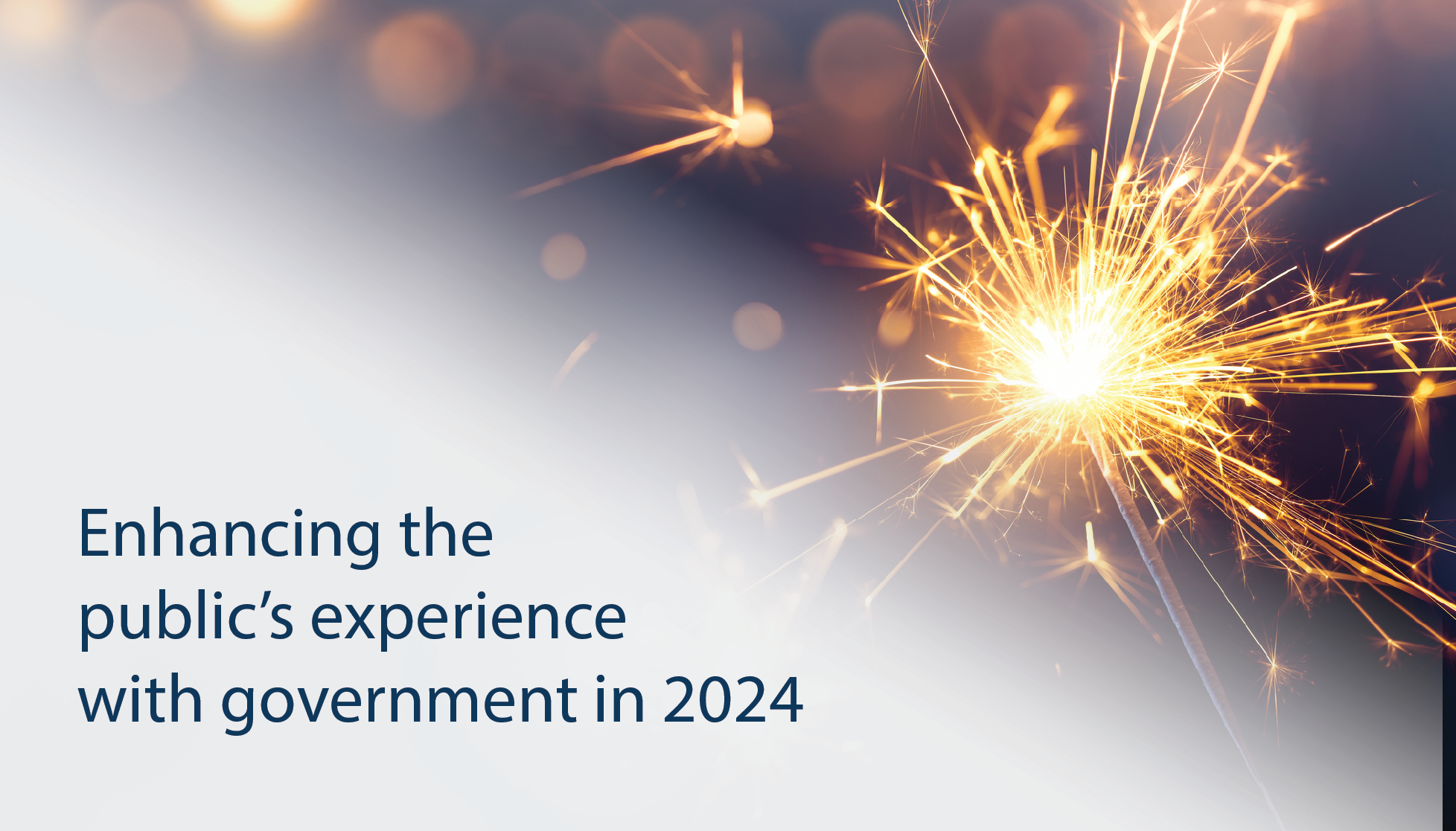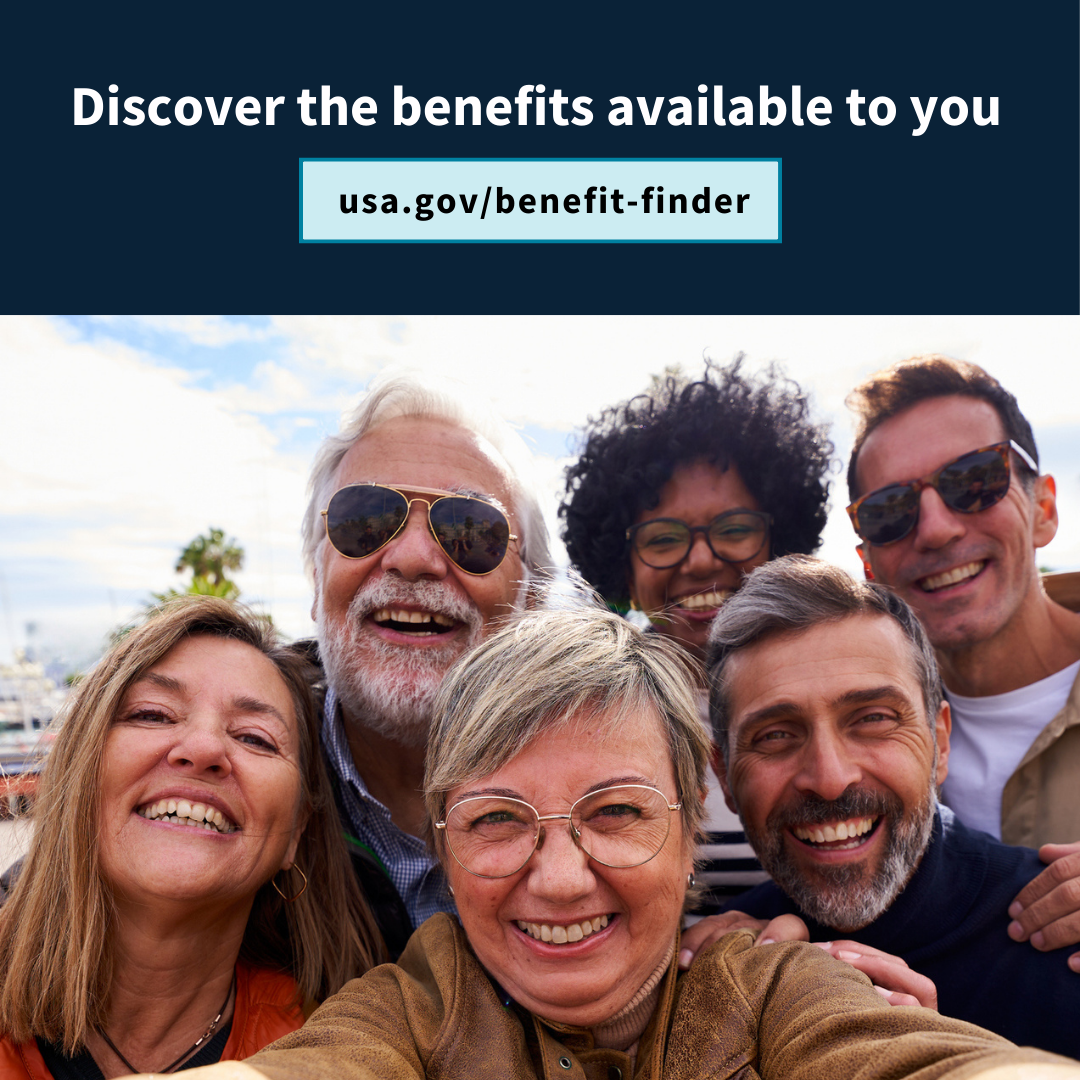Empathy was one of the guiding principles we used when we created the new version of USAGov’s benefit finder. We believe that in addition to being a critical component of human-centered design, empathy is essential for our product. People who are applying for federal benefits may be going through a difficult life situation. If we can’t empathize and fail to offer a product that understands and meets people where they are, we might lose the opportunity to provide the practical support they need.
We incorporated empathy into the benefit finder development process from ideation to launch. And we kept in mind that we were working with two different cultural contexts as we designed the benefit finder in English and Spanish. Here are some ways we used empathy to create a more effective, impactful, and useful product.
Empathizing with specific situations
USAGov’s benefit finder currently focuses on helping people find benefits when dealing with three major life events: death of a loved one, disability, and retirement. The complexities and nuance of dealing with the death of a loved one made it a natural but challenging choice to begin our journey of empathetic design.
Several medical studies found that people experiencing loss have a more challenging time processing and digesting information. To address this, we performed our own research and conducted user tests with English and Spanish speakers who had recently lost a loved one. By taking a transcreative approach, we were able to see how different language and cultural contexts influenced the way people perceived, understood, and used the application. The findings helped us get authentic feedback and better understand the surviving family members’ priorities.
Keep it simple
The results of our user testing also strengthened our resolve to keep only the most essential information and make the benefit finder as easy as possible to understand and use. Government language around benefits can be hard to grasp, especially for someone under duress. So we simplified the benefit eligibility form by reducing the amount of mental processing a user would have to do. We followed plain language standards to help us make the form easy to complete for someone experiencing high stress, grief, and competing priorities.
We decreased the character count and sentence length on the pages and deleted repetitive words and statements like “you may be eligible.” This helped us cut the text significantly without losing the purpose of the tool and contributed to a more accessible experience.
Shift accessibility left
Shifting accessibility left simply means to include accessibility needs and considerations at the beginning of the product’s design process instead of at the end. Our accessibility specialists were active and engaged from the start. By putting an early focus on accessibility, the benefit finder tool avoided common accessibility compliance issues leading up to launch. This strategy also saved valuable development time by avoiding the need to rewrite code for compliance later in the development cycle.
Use universal design
As part of our drive to shift left, we wanted to make sure the benefit finder was accessible and usable by everyone according to universal design principles. Defined as "the design and composition of an environment so that it can be accessed, understood and used to the greatest extent possible by all people regardless of their age, size, ability or disability," universal design is a cornerstone of accessibility. These are some ways we used universal design to increase empathy:
- By making the form short, straightforward, and accessible, we also made it more equitable. Regardless of age, disability, education, or life situation, anyone could use the form quickly and successfully, with or without assistive technology.
- We reduced the time and physical and cognitive effort required so people could quickly get what they were looking for. Our research showed users could complete the form and start applying for benefits in just a few minutes.
- We decreased the probability of errors and false positives by reducing the potential for questions to be left blank or answered incorrectly.
Mobile-first approach
Understanding that most users will access the tool on mobile devices, we followed a mobile-first approach and reduced the overall size and length of the application. We prioritized the mobile experience by adapting the desktop version from the mobile design. Only after having thoroughly tested, researched, and modified the mobile design did we design the desktop version. This approach ensured that mobile usability and user interface (UI) were prioritized in line with the needs of future users as people will increasingly choose mobile over desktop access to the tool.
Make it intuitive
In the previous version of our benefit finder, people answered questions in a multi-panel, single-page format. We changed this by shifting from an open single-page form in which users saw results as they answered questions, to a multi-page progressive form, which also follows Web Content Accessibility Guidelines (WCAG). In the multi-page format, users first answer questions before receiving a personalized list of eligibility results on a separate page. By creating a sequential flow, we reduced the cognitive burden on users while improving their focus on the results.
Increase engagement
For many, filling out forms feels like a burdensome use of their time. Our research found that people sometimes race to finish a form, leading to missed questions. To encourage greater engagement, we reduced the overall number of questions, bundling some together and eliminating others. And we moved the highest-impact questions to appear earlier in the form. This helped ensure that the most important questions didn’t get missed.
Encourage accuracy
We redesigned the benefit finder form to return more accurate results. We implemented “yes or no” formatted questions instead of an open-ended approach. And we made a few key questions required while allowing less important questions to be optional. This would allow the form to provide a more complete list of results with less information. We let users know on the start page that the more questions they responded to, the more accurate the results would be. But people could still retain the option to leave some questions unanswered.
Designing the updated benefit finder tool challenged us to put empathy at the forefront of the process. As we introduce new features and content, we will continue the ongoing journey to create a product that will be more useful to the people it serves.

-1.png)


.png)